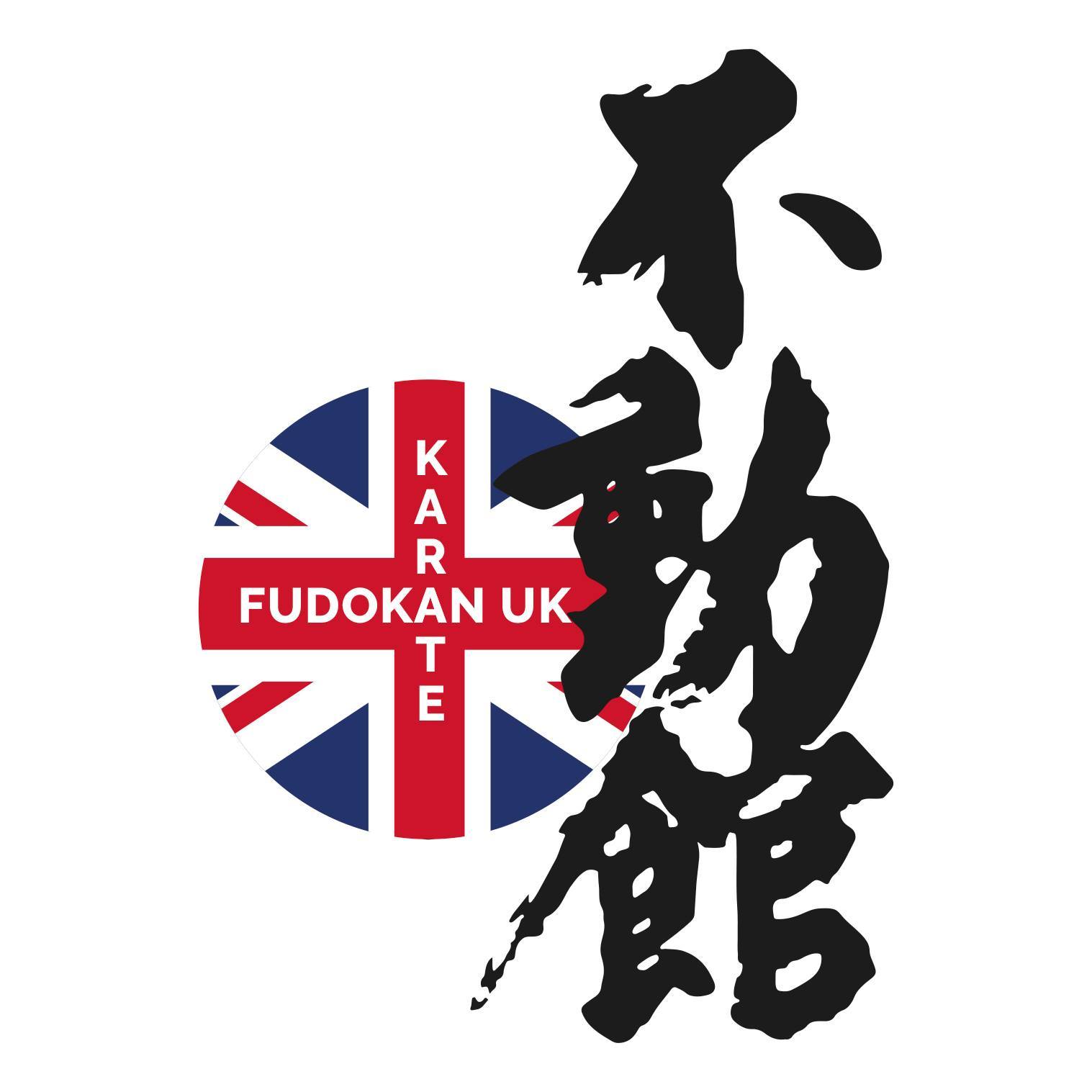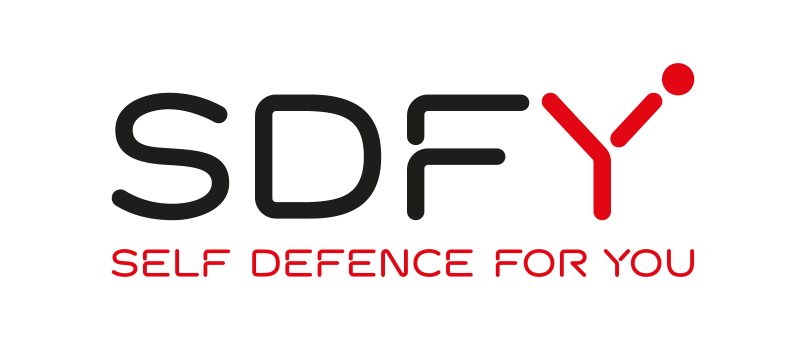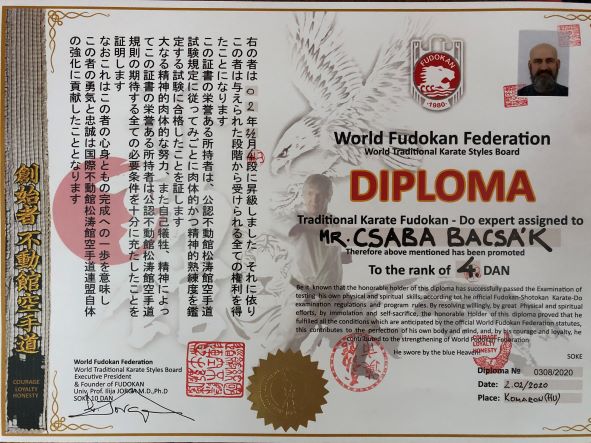Fudokan Karate UK
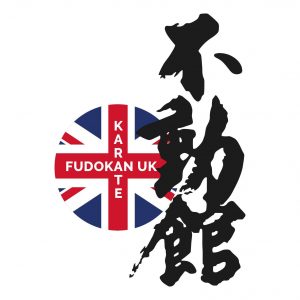 What do you think of karate?
What do you think of karate?
Why was Fudokan Karate UK established?
“It is never too early or late to start learning about self-defence or martial arts.”
(Csaba Bacsak)
Karate is one of the best educators of humanity. Just to list some of the “things” that it has given for not only me, but also for many other karate practitioners:
humility, respect, discipline, willpower, punctuality, harmony, well-being, morality, endurance, … and this list of wonderful influence could go on for a while.
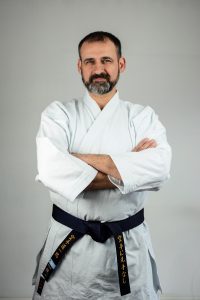 Those who have introduced me into karate and led me on the way to learn to like this art are wonderful people and outstanding teachers. I am still learning every day though and am training myself to be better. It is my belief that this gives me a stabile foundation for every aspect of life.
Those who have introduced me into karate and led me on the way to learn to like this art are wonderful people and outstanding teachers. I am still learning every day though and am training myself to be better. It is my belief that this gives me a stabile foundation for every aspect of life.
The founder of Fudokan Karate, Prof.Dr. Ilija Jorga would like his students to practice karate for a longer period of time and so founded a new, creative style that is prioritising dynamism and quality. He achieved this by uniting the true values of Shotokan karate with the modern scientific knowledge, in order to keep our wellbeing intact. I follow this path.
Many outstanding masters are helping me in my work, showing me the right way and I try and pass on this knowledge to my students.
Only the right things and in the right way.
Clearly and naturally without any foggy explanations.
This is why Fudokan Karate UK was established.
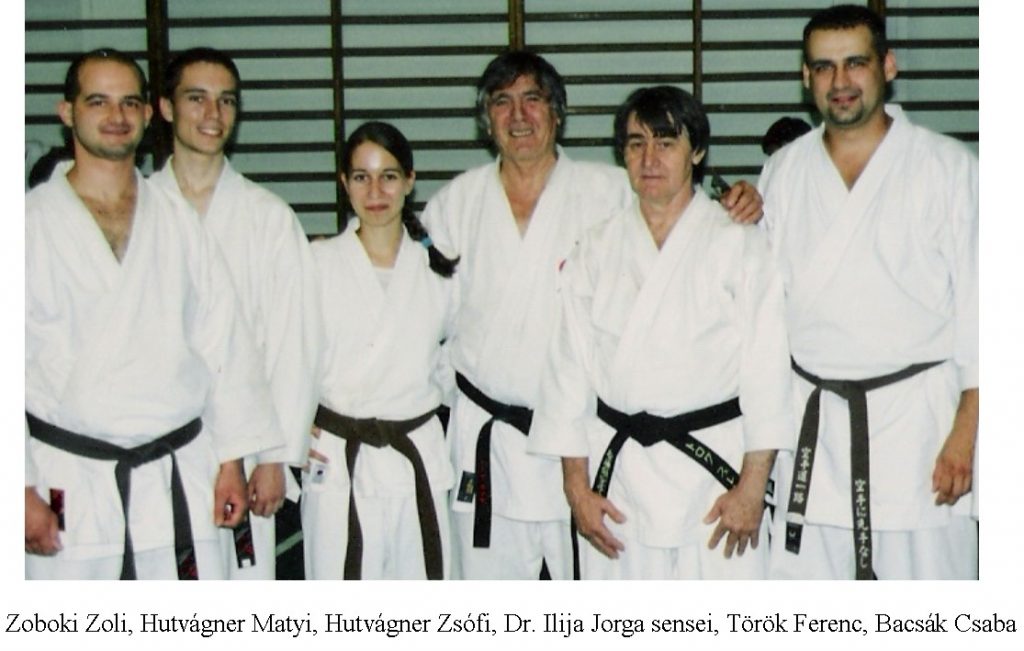
Fudokan Karate
Prof. Ilija Jorga , founder of FUDOKAN – DO KARATE
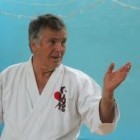 “Before any other explanation I am obliged to clear some facts that are related to the early beginning of Fudokan. From one unclear and foggy vision to the extremely serious world institution. I can say freely that Fudokan symbolically has appeared in the moment when I have entered the Dojo for the first time. In the beginning undetermined, without almost no contours, amorphous, unclear and undetermined idea, thought gradually has matured. Inside myself I have been caring a strong wish that the thing I do be somehow different and certainly that had step by step developed and had greater complicity thru many years of hard training of all kind, competitions and friendship and communication with other karatekas during my lifetime.Karate club “Fudo” in Paris, that was the
“Before any other explanation I am obliged to clear some facts that are related to the early beginning of Fudokan. From one unclear and foggy vision to the extremely serious world institution. I can say freely that Fudokan symbolically has appeared in the moment when I have entered the Dojo for the first time. In the beginning undetermined, without almost no contours, amorphous, unclear and undetermined idea, thought gradually has matured. Inside myself I have been caring a strong wish that the thing I do be somehow different and certainly that had step by step developed and had greater complicity thru many years of hard training of all kind, competitions and friendship and communication with other karatekas during my lifetime.Karate club “Fudo” in Paris, that was the 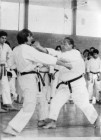 name of Dojo of my teacher Taiji Kase. Even today I still remember clearly of my first training in the mentioned Dojo, in early 70’is.
name of Dojo of my teacher Taiji Kase. Even today I still remember clearly of my first training in the mentioned Dojo, in early 70’is.
The part of Fudokan probably originates from that time. On the other hand, Fudokan will grow in something much greater and higher then sentimental and beutiful memories. By random case or acto of destiny, I have combined the word Fudo with the word Kan and got a beautiful pair of word Fudokan.That hasn’t done by any Japanese, that was done by me, young, daring man, man from our region carried by vision.
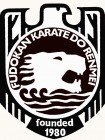
logo 1980

New logo from 2012

Fudokan Japan ideogram

Letter of Confirmation Ideogram Fudokan
The 3 ideograms connected in the word Fudokan signifies: basis(base), home and foundation. Therefore the word Fudokan means: “House on stabile, solid, granite foundation.” In the case when the word Fudokan would be split and set in the form of Fu Do Kan it literally means Home Solid Home. Bit if the word Fudokan represents and certainly it cans for example like Fudo Kan, the thought is totally different. Then it takes deep, almost philosophical and ethical meaning which could be translated like “ immobile(real) wisdom”.
The so called “Phenomenon of immobile wisdom” is the state that every truly Budoka prefers and strives with his complete existence. Not rarely the classics of Budo devote to it not at any coincidence, enormous attention and almost all teacher during history of fencing point out that it is a top that people strive to in the art of fighting. Modern top experts of Budo like for example Prof. T. Suzuki explains so called phenomenon of immobile wisdom by that that he equalizes it with mental stability. Simply, for him that’s the state when Budoka governs his emotions and doesn’t comply them with any external influence( for example when above you is a risen sword that is ready to cut you), your spirit is free and can freely find the best solution, undisturbed of emotions. Really, I couldn’t think of anything prettier, was it coincidence, certainly not! It doesn’t revolt me the surprise and certain dose of amazement when my dear friend H. Chirai asked me where did I come up with that beautiful name? Don’t forget, earlier before when a student would give to him Budo passport of Fudokan to him to sign, he would always throw it angry! Today when all those years have passed and when he realized all the glory of Fudokan, its irrefutable reality and dedication of its holders, he accepted it as normal appearance.
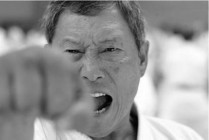 That wasn’t by coincidence.
That wasn’t by coincidence.
Sensei Chirai, the famous and prestige name in the world of karate, rarely educated and intelligent man, the man of strong principles and very ambitious , as such has built a magnificent institution, not only in Italy(where he was located and lived), but in the whole world. He understand the deep meaning which in it carried the word, the ideogram of Fudokan. Constancy, honesty, loyalty, consistency to work and to teacher, where it is not possible to wonder off the path to the left or right carried by material interest and profane life. Fudokan hasn’t resist from its earliest beginnings till today to the infection of moral disfiguration, where betrayal, corruption and selling of positions were something, unfortunately usual in karate but for Fudokan unimaginable and completely foreign. That ugly, disfigurative and unmoral phenomenon is so often present in the world of karate and has taken its toll more and more. I must say that even in that time it was hard to resist to it, and it was only possible if the karateka had in him real strong moral values and woven ethical principles.

The emblem of Fudokan has certain symbolic inter-connected with a lot of meanings, with a deep sense. On the shield of Fudokan the risen eagle is shown, then the sun, the tiger, the waves of ocean and finally the hundred years old trees. All is that shown on shield, with a lot of meaning connected, so it easily recognizable to all who know at least a little about history of karate. To them it will be easy to see what is the meaning of Fudokan karate. The shield has double meaning: first it shows the connection of Fudokan and Budo tradition, the second by no doubt suggests on self defense, which is the essence of karate.

The eagle risen above tiger which is set in the sun symbolicly shows the historical figure, the legendary Joshitaka Funakoshi, the genius of karate.

The tiger(shoto) is a reincarnation of his father Gichin Funakoshi, the inventor of modern karate. There no comments are needed but setting the eagle above tiger was my wish that on some way, what is allowed to me, make historical mistake right!
I will remind you that in traditional Japan everything what was done, was credited to father, which is not rightand not true therefore that Joshitaka was truly the pioneer of traditional karate. Unfortunately, he died very young in the age of 35, but that didn’t bother him at all to leave an indelible trail in history of karate. On the left side of shield, the notched mane of tiger is spotted, which represents the branches of the hundred years old trees and basically picturesquely the waves of Pacific are present. By connecting the both symbols, message is obtained, the meaning, that is the doctrine is defined of Budo Karate of Fudokan which means : “ In the attack mightily like the waves of Pacific and in defense strong like a hundred years old trees!” I think that is not hard at all to recognize in this colorful, so warning and wordly doctrine the all together teachings of my teachers.

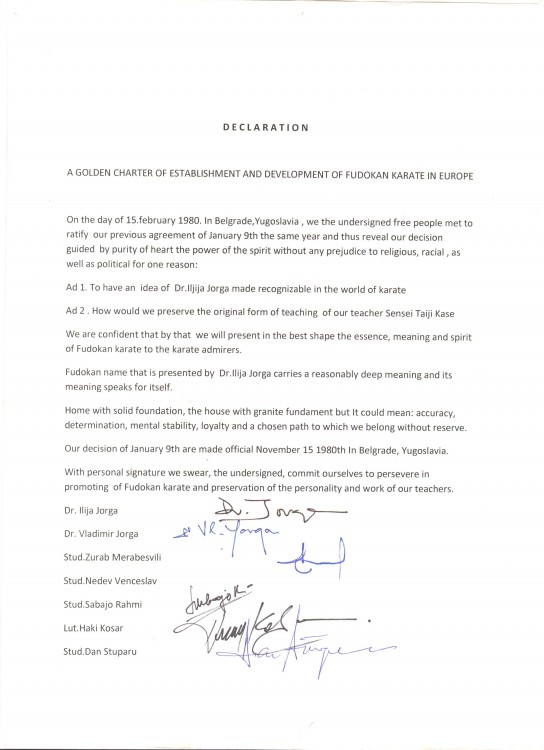
The official foundation of Fudokan was delineated with the “small” ceremony, it was long ago in 1980.on 15th of November.By signing the Declaration of foundation of Fudokan by my oldest students, friends and like-minded people, the stamp was put and Fudokan set off into the world, truly in the beginning quietly without the big pomp. “
Dr.Ilija Jorga, Dr. Vladimir Jorga
Students: Zurab Merabesvili, Nadev Venceslav, Soebajo Rachmi, Haki Kosar, Dan Stuparu
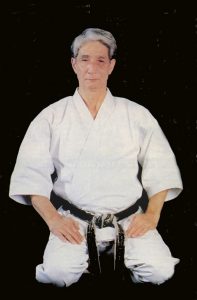
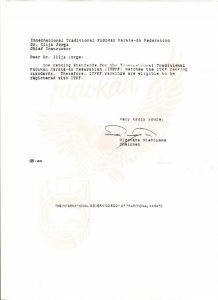
Fudokan-do karate recognition ranking standards by the great master Hidetaka Nishiyama, chairman of ITKF.
Dr. Ilija Jorga
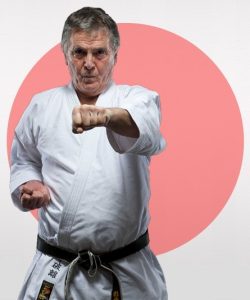 The Traditional Fudokan Karate was founded in 1980 by Prof. Dr. Ilija Jorga together with several similarly-minded people, forming the International Fudokan Karate do Renmei. Since 2012, the organization is known as the World Fudokan Federation. The three ideograms in Fudokan stand for stability, hardness, thoroughness, house and home. Fudokan is a house with solid foundations.
The Traditional Fudokan Karate was founded in 1980 by Prof. Dr. Ilija Jorga together with several similarly-minded people, forming the International Fudokan Karate do Renmei. Since 2012, the organization is known as the World Fudokan Federation. The three ideograms in Fudokan stand for stability, hardness, thoroughness, house and home. Fudokan is a house with solid foundations.
The Fudokan emblem – carrying the traditional symbols of an Eagle, the Sun, a Tiger, and an Ocean Wave – resembles a coat of arms, bound to the tradition of sport karate. Fudokan is connected to tradition and self defense. A correct execution of basic techniques in Fudokan requires mental and physical harmony, a unity of physical and mental aspects in the interpretation of each single technique. The mind must be completely calm and open, in the sense of initial, primal wariness. This principle is embedded even in the name of Fudokan: a house of calm wisdom. The calm mind directs every part of the body at every moment.
Fudokan karate encompasses personal, moral and ethical guidelines identical to those described by Gichin Funakoshi – the moral code of traditional karate. It is in Fudokan where the space for applying and realizing this code remains open. Our adherence to the moral principles and technical values in their traditional form tells us how strong the martial art spirit of Fudokan will be.
Beginning of karate training First teachers: M. Kilian (judo) and V. Yorga (karate)
First Japanese karate teacher – sensei: Tetsuji Morakami
University champion of Serbia
Rank of SHO DAN received from T. Murakami in Zagreb, Croatia
First champion of Yugoslavia in Kumite (free fight) – open category, Zagreb, Croatia Rank of Nl DAN received from Japanese sensei Taiji Kase, St. Rafael, France Author of first published karate book in Yugoslavia: “Karate – introduction in martial art”
European karate championship – Hamburg, 3rd place
Elected member of Technical committee of European karate union
Kumite champion of Yugoslavia – open category
Kumite champion of Yugoslavia – half-middle weight category
European championship – JKA, Brussels, 3,d place
First elected Technical director of European karate union
World karate championship – WUKO, Tokyo, ranked from 5th to 8th place
Kumite champion of Yugoslavia – open category
Kumite European champion – European championship (JKA, AEKF), Chrystal palace, London
Kumite champion of Yugoslavia – open category
Rank of SAN DAN received from T. Kase, Paris, France
European JKA Championship – 3rd place, Milano, Italy
World karate championship – WUKO, Paris, ranked from 5th to 8th place
WUKO Congress – elected for Vice – president, Paris, France Gichin Funakoshi memorial tournament, Tokyo, Japan, 2nd place Kumite champion of Yugoslavia – open category
Kata Champion of Yugoslavia
Rank of YON DAN received from T. Kase, Belgrade, YU Elected as a Technical director of EAKF
European Kata Champion (EAKF – Milano) Mediterranean championship, 3rd place – kata, Milano – Italy
World karate Championship, IAKF, Tokyo – Japan, 4th place – kata
European kata Champion (EAKF – Belgrade) Mediterranean kata Champion, EAKF – Cairo
Rank GO DAN received from T. Kase, Belgrade – YU
World karate championship, IAKF, 3rd place, Bremen – AUS Official Foundation and promotion of Fudokan Karate style, November 15th, Zurich Formation of International Fudokan Karate Renmei – Belgrade (IFKR)
European karate championship, 3rd place, Bremen – AUS
Rank of ROKU DAN received from T. Kase, Paris – FR
Rank of SHICHI DAN received from H.Nishiyama, Los Angeles – USA
Elected as executive director of IFKR
Promotion of Fudokan style in Austria, Poland, Russia, Belarus
Promotion of Fudokan style in Lithuania, Slovenia, Great Britain, Greece, Moldova, Armenia, Albania, Azerbaijan, Bulgaria and Croatia
Promotion of Fudokan style in USA and Canada
Elected as a technical director of German traditional karate federation
Elected as a President of Traditional Fudokan Karate federation of Germany
Formation of Royal European Karate Academy – St. Prohor Pchinjski under patronage of H.R.M. Princess Jelisaveta Karadjordjevic
Promotion of Fudokan style in Denmark, Uzbekistan, Turkmenistan and Kirgizia
Elected as a president of technical committee of Mediterranean traditional karate federation, Davos – SUI
Elected as a President of technical committee of Balkan traditional karate federation (Bucharest – Romania)
Promotion of Fudokan style in Australia, Norway, Mongolia and Indonesia
Rank of HACHI DAN received from H. Nishiyama,M
San Diego – USA
Rank of KU DAN awarded by WTFSKF, Zurich – SUI
(Verona – Italy)
Organizing of First World Fudokan Karate Do Championship,
Sabbia Doro – Italy
Organizing of Second World Fudokan Karate Do Championship, Lodz – Poland
Rank of SOKE DAN awarded by All Japan Ju-Jitsu International Federation, November 25 – Poland
Rank of JUDAN Kaiden Hanshi (10 DAN) awarded by International Budo Masters Association, June 17th, USA
Rank of 10 DAN awarded by Federal Alliance Bujitsu of Russia, July 4th, Russia
Foundation Word Fudokan Federation (WFF) – Cacak, Serbia
2013
Executive President of WFF
(Prague 30.11.2013)
Funakoshi Gichin Master, The Father of Modern Karate
 Funakoshi Gichin was born on Nov 10, 1868 in Yamakawa, Shuri, Okinawa Prefecture. He was of samurai lineage, from a family which in former times had been vassals of Ryukyu Dynasty nobles.
Funakoshi Gichin was born on Nov 10, 1868 in Yamakawa, Shuri, Okinawa Prefecture. He was of samurai lineage, from a family which in former times had been vassals of Ryukyu Dynasty nobles.
By age 11 he had already made a name for himself in Ryukyu-style martial arts. Beginning his training under Master Azato Anko, it wasn’t long before he equaled his master in ability, and shared with him the distinction of being the “most accomplished” martial artist in the field. He also learned karate-jutsu (written with characters that mean “Chinese-hand martial art”) from Master Itosu Anko. Both his teachers were impressed by his nobility of character.
As over the years he pursued his training and continuously developed his remarkable skills, Master Funakoshi became chairman of the Okinawa Martial Arts Society, as well as an instructor at the Okinawa Teacher’s School. Then in 1922, when he was 54 years old, he introduced Okinawan karate-jutsu at the first Ministry of Education (now Ministry of Education, Science, Sports, and Culture)-sponsored Physical Education Exhibition. This introduction, the first ever public display of karate-jutsu in Japan, was a stunning success. The previously unknown martial artist Funakoshi Gichin rose to instant fame throughout the Japanese world of martial arts.
Immediately the founder of modern judo, Kano Jigoro, invited Master Funakoshi and his pupil Gima Shinkin to the Kodokan judo dojo to give a demonstration of kata. The highly-attended event filled the Kodokan dojo to capacity. It was so well-received that Master Funakoshi found himself pressed on all sides to stay in Tokyo.
Excited by the opportunity to further promote the martial art that he had done so much to introduce to Japan, Master Funakoshi subsequently began teaching it at Tokyo’s Meiseijuku, a dormitory for Okinawan students. In 1922, he published a book entitled “Ryukyu Kempo Karate.” It was the first formal exposition in Japan on the art of karate-jutsu. Not only were its contents fresh and novel, it was also beautifully written, and immediately created an unprecedented karate boom.
As the popularity of karate-jutsu began to spread, Master Funakoshi produced the first ever “Dan Ranking Certification” in April, 1924.
Around the same time, with the encouragement of his teacher of Buddhism, Abbot Furukawa Gyodo of Enkakuji Temple in Kamakura, Master Funakoshi started practicing Zen. He contemplated the well-known Buddhist teaching that says “form is emptiness and emptiness is form.” He began to see the relevance of that teaching to his martial art, and ultimately changed the characters for karate from kara + te (“Chinese” + “hand”) to kara + te (“empty” + “hand”).
In order to popularize the “local” Okinawan martial art in the rest of Japan, Master Funakoshi synthesized a complete system of techniques and theory, and changed the Chinese and Okinawan names of the kata into standard Japanese. In 1929, after much thought and reflection, he also changed the name of karate-jutsu (“Chinese-hand martial art”) to karate-do (“the way of karate,” or “the way of the empty hand”). He then defined the Twenty Precepts of Karate, and established a grand karate philosophy.
At last the way of karate had come into its own, and was gaining popularity all across Japan. The number of people wishing to begin training was growing daily—so much so that it became difficult to find a place to hold all those who wished to practice. So in 1939 Master Funakoshi established the “Shotokan” dojo, which he built at his own expense. (“Shoto” was the literary first name he used when doing calligraphy and writing poetry. “Shoto” means “Pine Waves,” and refers to the sound of wind blowing through the pines, which resembles the sound of ocean waves.)
By this time, Master Funakoshi had long been teaching karate to high-school and university students. As a result, karate clubs had sprung up at higher education institutions all over Japan—which is another reason why karate has become as respected as it is today.
In the air raids of World War II, the Shotokan dojo was destroyed, and the growth of karate came to a halt. But after the war, followers of Funakoshi’s way re-grouped, and in 1949 they formed the Japan Karate Association, with Funakoshi Gichin as Supreme Master.
On April 10, 1957, the Ministry of Education gave official recognition to the JKA, and it became a legal entity. A mere sixteen days later, at the age of 89, Master Funakoshi passed away. A large public memorial service was held at the Ryogoku Kokugikan (Ryogoku National Sumo Hall), attended by more than 20,000 people, including many famous names who came to pay their respects.
A memorial monument to Master Funakoshi was established at Enkakuji Temple in Kamakura. Members of the JKA pay an honorary visit on April 29th each year, the date of the Shoto Festival.
20 Precepts
Before he established the JKA, Master Funakoshi Gichin laid out the Twenty Precepts of Karate, which form the foundations of the art. Within these twenty principles, based heavily on Bushido and Zen, lies the philosophy of the Shotokan.
- Never forget: karate begins with rei and ends with rei (Rei means courtesy or respect, and is represented in karate by bowing)
- There is no first attack in karate
- Karate supports righteousness
- First understand yourself, then understand others
- The art of developing the mind is more important than the art of applying technique
- The mind needs to be freed
- Trouble is born of negligence
- Do not think karate belongs only in the dojo
- Karate training requires a lifetime
- Transform everything into karate; therein lies its exquisiteness
- Genuine karate is like hot water; it cools down if you do not keep on heating it
- Do not think of winning; you must think of not losing
- Transform yourself according to the opponent
- The outcome of the fight depends on one’s control
- Imagine one’s arms and legs as swords
- Once you leave the shelter of home, there are a million enemies
- Postures are for the beginner; later they are natural positions
- Do the kata correctly; the real fight is a different matter
- Do not forget control of the dynamics of power, the elasticity of the body and the speed of the technique
- Always be good at the application of everything that you have learned.
DOJO KUN
Senior instructors at the JKA developed the Dojo Kun, which everyone studying at the JKA commits to memory. With each practice session at the dojo, students kneel in the seiza position and repeat these five precepts out loud. This process reminds students of the right attitude, frame of mind and virtues to strive for both within the dojo, and outside.
Jinkaku kansei ni tsutomuru koto
Seek perfection of character
Makoto no michi o mamoru koto
Be sincere
Doryoku no seishin o yashinau koto
Put maximum effort into everything you do
Reigi o omonzuru koto
Respect others
Kekki no yuu o imashimuru koto
Develop self-control
FUDOKAN KARATE UK – Dojo Etiquette
- The DOJO is not just a place to train, but a shrine as well. Every time you enter or leave, please stop at the door, with your body facing inwards, bow down and then shout OSS! This represents your respect and appreciation towards the Dojo and its occupants.
- If the training has not started yet, after you enter, go to everyone holding a higher belt rank than you and greet them with a bow and a loud OSS! Start with the one of the highest rank!
- If you are already in the Dojo and someone of a higher belt rank enters, wait until they are finished with their greetings before going to greet them yourself!
- If someone with a black belt or the coach enters the dojo, the person with the highest belt rank should lead with a SENPAI / SENSEI / SHINAN NI REI
- Showing respect:
- In standing position: musubi-dachi position / slight bow / eye contact towards the direction of respect / with the word oss.
- In seating position: Japanese sitting position / seiza and zazen: sitting on your feet with the left feet at the bottom. Hands on your tights facing downwards, loose shoulders, straight back. When entering the training room / dojo, leave your slippers at the door and give your respects to the dojo.
- Do not practice any fighting if the coach is not present!
- Students must practice in silence and individually until the beginning of the training. If someone is late and the training is already going, following their respects to the room, they need to stay in seiza position until they receive permission from the coach to stop. Another deference should follow this step, still in seiza position before they can join the training. Upon leaving the dojo, another deference is obligatory.
- Everyone is responsible for the maintenance of the clean, acceptable and safe environment of the Dojo.
- You must not shout, run around, play tag, eat, drink, chew gums, smoke, swear or do any other unfitting behaviour in the Dojo.
- Karate students should wear karate-gi. The student must make sure that their clothing is clean and worn appropriately with the belt knot following the standards. Labels or coats of arms cannot be put on the karate-gi, excluding the logo of the manufacturer and the club. Visible clothes cannot be worn under the karate-gi, except for a white undershirt in case of females.
- Unsafe objects cannot be worn during the training, including watches, rings, bracelets, necklaces, etc.
- Nails must be cut short and kept clean.
- The karate students must line up in front of the coach at the beginning of the training in order of their ranks with the highest rank starting on the left of the coach. Upon the command of the coach, the students must descend into seiza position / with the left knee touching the ground first /, followed by the spiritual concentration / mokuso / with the eyes closed. Once the coach calls mokuso-yame, the concentration ends and upon the rei command, the student of the highest rank needs to initiate a deference. Karate students must listen to all commands of the coach without questions and can only make comments at the end of the training. The room can only be left with the coach’s permission.
- Parents and/or any other relatives can only stay in the Dojo if the coach approves.
